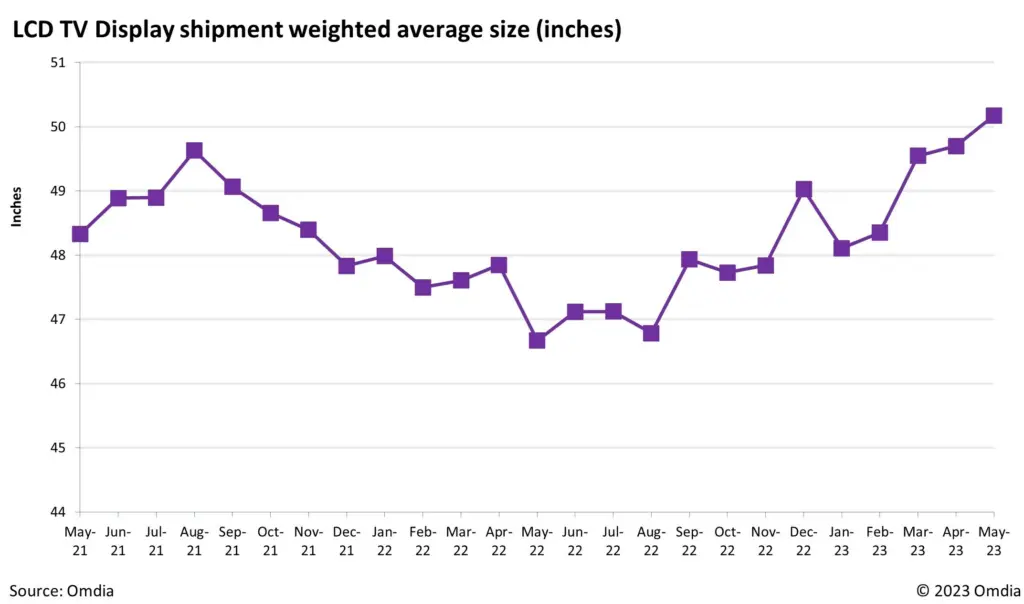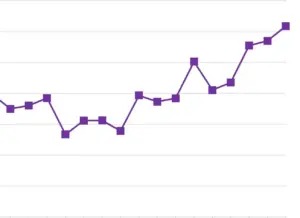New research from Omdia unveils a significant milestone in the TV display market. In May 2023, the monthly LCD TV display shipment weighted average size exceeded 50 inches for the first time, indicating an irreversible trend towards larger TV displays. The shift comes after a challenging year for the TV display and OEM makers in 2022, where demand for both unit and size formats declined. However, panel makers responded by offering larger sizes, leading to a substantial rebound in demand throughout 2023.

Key players like BOE, TCL CSOT, CHOT, LG Display, and Sharp contributed to this trend by producing larger panels, such as the 55-inch and 85-inch made in Gen8.5 and the 65-inch and 75-inch made in Gen10.5 fabs. This shift in consumer preference is driven by the demand for better picture quality and visual performance, which larger TVs can deliver with features like MiniLED backlight with dimming contrast ratio, quantum dot technology for improved color gamut, better refresh rates, and super slim bezels with GOA (Gate on Array) display driver IC technologies.
Omdia’s senior director in display research practice, David Hsieh, points out that this shift is expected to change the TV display replacement cycle from unit-based replacement every 6-7 years to area-based replacement every 4-5 years. Consumers are now convinced that larger TVs offer a superior viewing experience, creating an irreversible trend as they are unlikely to revert to smaller sizes.
As demand for larger LCD TV displays continues to rise, the industry can expect greater TFT LCD capacity consumption and an ongoing expectation for superior features within these larger displays. This trend bodes well for the display manufacturing industry as it aligns with consumer preferences and market demand.

